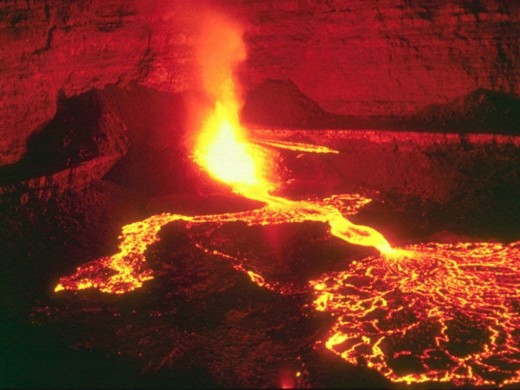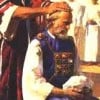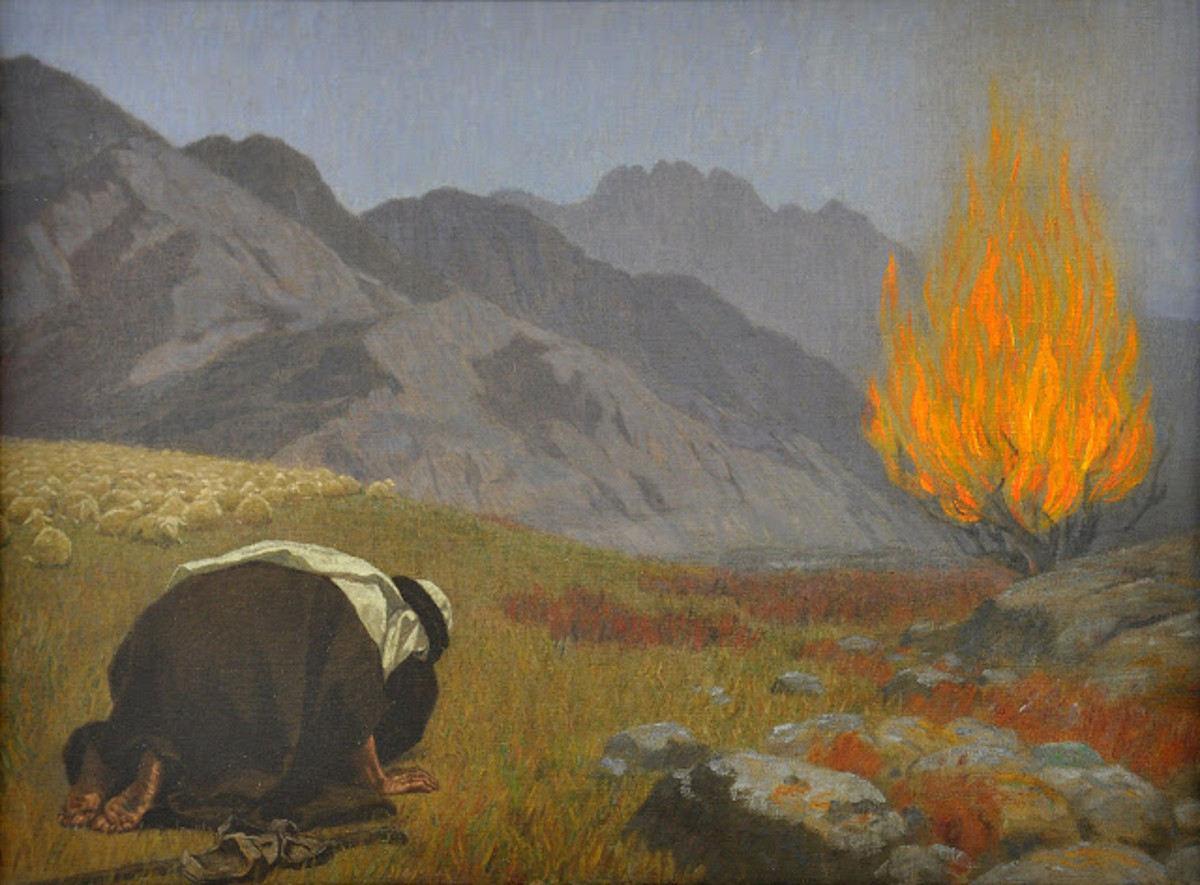Rediscovering the Exodus 2
As mentioned previously, the Exodus could not have occurred in a vacuum, even thought there does not appear to be any other eye witness accounts or historical records from other kingdoms to confirm any such event of such a magnitude having occurred. But therein lies the first issue, the one concerning magnitude. What we perceive of having been a tremendous event of such significant numbers to represent the evacuation of all of Goshen, may not have been that significant at all. Although the Torah would suggest the exodus was measured in hundreds of thousands, we do know that the scriptures often used numbers metaphorically, often in an exaggerated nature in order to emphasize a point. Then again, they may have been describing the total after a generation’s birth in the desert rather than at the actual time of the Exodus. We do obtain a suggestion of the actual numbers from the Exodus based on the size of the Tabernacle. We know that it was built shortly after entering into Sinai in order to accommodate all men of suitable age for prayer. Moses was a strict authoritarian, so there would have been no excuses for the men not to attend the sacrifices and services. The children, women, etc. would have remained camped outside its perimeter fence along with any people that had not joined the covenant. Since we know that the perimeter fence was 100 cubits by 50 cubits, and we commit the first 20 cubits of its length to the priestly functions and altar, then we roughly have space to accommodate worshippers of approximately 10,500 square feet. Although it would be a tight fit, we can imagine 7500 men of 20 years and older standing upright within the confines of the inner court for prayer. If they had to prostrate themselves, then it would be with some difficulty but manageable. Even if we were to assign one woman to every man of that age, then we can safely assume there were at least 15,000 people of a mature age. And if that is the case, then we can also assume there would have been probably double that in children, from infants to teenagers accompanying them, or roughly 45,000 people at the time of the Exodus. Though 7500 men of age may sound like a large number, it would hardly be sufficient to go to war with, battling the tribes that inhabited the land. So there may have been a practical reason as well why Moses chose to stay in the desert. By allying themselves with the Midianites, he would have perhaps doubled this number, but against cities even that number would barely register as a threat. So Moses stayed a generation in the desert until he had sufficient numbers to continue on his way and then dismissed Jethro with his tribe back from whence he came. With this younger generation now grown to manhood, the numbers would have been closer to a twenty thousand man standing army, much more formidable, and with the offspring born in the desert, an insurance of future numbers to go to war with Moses was prepared to enter the land of Canaan. If they did stay in the desert for a single generation, then the total population would have been a multiple of the 45,000. Perhaps they averaged five children per family unit, then if that was the case they would be of a total number suggested by the Torah, numbering over 200,000.

Insignificant and Ignored
Would the Egyptians have bothered mentioning the Exodus of 15,000 slaves, the children not even being considered in the equation? Probably not; especially if their leader was a known renegade prince from the Great House as the Torah describes Moses. Like every other prince or Pharaoh that ran afoul of the gods of Egypt, their names were erased from history, literally chiselled out of the stone in which they had been engraved. And taking into consideration that the new dynasty wanted nothing more than to eliminate anything to do with the heretical 18th Dynasty that preceded their rise, it should be no surprise that there is no recorded history of this event. After all, the 18th Dynasty attempted to introduce monotheism into Egypt, a failed experiment as far as the Ramesids were concerned and it was their role to expunge if from the Book of Life. So any event where what they would have considered a continuation of the leprosy on their Ka, they would be thrilled if it voluntarily separated itself and passed quietly into the desert. The Pharaoh would have been grateful for this gift from the gods and would not have described it as anything more than the breaking of the curse or similar. There would have been no mention of Apiru, Shazu or any other slaves fleeing from the country as they had become undesirables, and beneath mentioning.
So the error
of those looking for validation of the Exodus is the fact that they look for
confirmation through the historical archives recording an event that actually concerned
people. But as you can see, there was no reason or
justification to record such an event other than by the Israelites themselves who saw it as the turning point in their lives. But what could not be overlooked were the catastrophic events described
as the Ten Plagues. History would not have been able to ignore this had they occurred. If those truly were
phenomena of nature then there would be a geological and possibly archeological evidence and
recording of such events and these would be beyond dispute. In order to fully appreciate this it is necessary to have an understanding of what was occurring around this time. We must look towards the great Hittite
Kingdom (1750-1200 B.C) which besides Egypt, dominated the known world. By 1750 B.C.E., the Hittites had taken control
of a large part of Anatolia (Turkey) and established their first kingdom at Nesa, near
Kultepe. The old city of Bogazkoy was
declared the capital of the Kingdom and the name of the city was changed to
Hatusa. Hattusili became the first king of the Hittites. Hittites used chariots
against the Egyptian army for the first time in the history of wars and not
too surprisingly, the Egyptians lost that war. Hittites used both cuneiform and
hieroglyphic inscriptions so we must appreciate that this was not a barbaric civilization but a highly sophisticated one that had mastered the manufacturing of iron implements. By the
latter part of the Late Bronze Age (c. 1400-1200 B.C.E.), Mycenaean
civilization flourished in Greece and Crete but the Hittites controlled most of
Anatolia and northern Syria while the Egyptian New Kingdom ruled not only in the
Nile Valley but also in Palestine and southern Syria. Even though these three civilizations were in a
perpetual state of war, commerce flowed over trade routes that crisscrossed
both land and sea carrying cargo from Cyprus, Canaan, Egypt, Anatolia and
Mycenaean Greece. Everything points to a
bustling, burgeoning and flourishing multicentred civilization that looked
unstoppable. In the scope of civilizations developing to this degree, the expulsion of a few thousand slaves was insignificat but even more so if there were other matters of a far graver concern.
World Catastrophe
But at around the same time of the Exodus,during the 13th century B.C.E. the great Bronze Age civilizations of the Aegean and Near East suddenly collapsed without any indication or advance warning. The destruction of the palace at Knossos which had been originally dated c. 1400-1380 B.C.E. by Sir Arthur Evan, a dating that had stood without question for a long time, has now fallen under recent review of evidence from Knossos. It is now considered more likely that the palace continued to exist under Mycenaean rule well into the 13th century B.C.E. Again making the timing of its destruction more in line with the timing of the Exodus.
Similarly, if we were to examine the events of a century later, all these great civilizations had begun to unravel simultaneously with evidence of their cities burned, their once extensive trade becoming virtually nonexistent, and large groups of people migrating from one place to another without any known justification. The Aegean raiders that sailed to the near east only to become the Philistines of the Torah are no more or less a displaced people as Moses and his people wandering in the desert were. And when the legacy of this catastrophe ended and the world awakened from under this spectre of terror, it had metamorphosed into brave, new world. Within the magnificent Late Bronze Age two new peoples eventually arose, which we know of as the classical Greeks and biblical Israelites. From a catastrophe came two people that would ultimately define Western civilization.
So let's assume there was a major earth shattering event (still to be defined) that destroyed the archaic Greek civilization, caused the Hittites to disappear as a force to be reckoned with, caused a mass migration of peoples throughout Europe and had its effects seen and felt in ancient Egypt. Then surely there would be some physical evidence of this cataclysm spread across the Mediterranean and thereby confirming it was of a magnitude never seen before by humans; in other words, a divine punishment in the eyes of these ancient people. For more evidence we only have to look at what archaeologists refer to as Troy VI which has been dated to 1800-1275 B.C.E. Troy VI was concurrent with the Great Hittite Kingdom and established its kingdom on the ruins of Troy V near Canakkale in the northwest region of Anatolia only to disappear at the same time the Hittite Kingdom appears to have been knocked off its pedestal. The city kingdom was abandoned following a migration of Indo-European groups from the Balkans into the region after a major earthquake devastated the city around 1200 B.C. But the coincidence of a mass migration for Balkan people at the same time this great city of legend was being destroyed would suggest that the migration had been forced upon these people by the same event that destroyed Troy. What may have been an earthquake in Troy, may have been a tidal wave in Greece, or an eruption elswhere on the continent. Combine these events and you have mass devastation. So as we can see, what was occuring in Anatolia, was also occuring in Greece and the Balkans, and from what we know from the Torah, was affecting Egypt as well. We also know that during this same time period, there were major population displacements and replacements throughout the region, including Cyprus and the Levant all while the Hittite empire was collapsing.These were not random events but caused by a single source yet to be determined.
Every event must have its epicentre, so where would this earth shattering event have taken place? From the Torah we know that the looking from Goshen, there was a pillar of light at night and a pillar of smoke by day that guided Moses initially to the Northeast, towards Yam Suf, or the Sea of Reeds. This would suggest that we should look to the northeast which draws our eyes to present day Turkey, the home of the once mighty Hittites. Karprinar is a volcanic filed located in central Turkey and it consists of five cinder cones, two lava fields and several explosion craters and maars. The 300-m-high Meke Dağı, is surrounded by the crater lake known as Meke Golu and it is one of the largest cinder cones in Central Anatolia. A volcanic field of this size if it was erupting all at once, may have also triggered the Mediterranean Ring of Fire to ignite all around the north and east of the sea. And with that much ash, smoke, and sulfur being spewed into the air, it had to have a long term effect as well. And we do get some comment from Egypt that something had changed drastically in that it was recorded that from the time of Ramses III (c. 1182-1151 B.C.E.) until that of Ramses VII (c. 1133-1127 B.C.E.), the price of an emmer of wheat rose to eight times its earlier price. Not until the reign of Ramses X (c. 1108-1098 B.C.E.) did the price drop, but even then it remained twice what it had been at the beginning of the 12th century. During this time, the government also frequently failed to pay grain and other food rations owed to artisans that worked on the royal tombs. These craftsmen staged strikes at least six times between about 1154 B.C.E. and 1106 B.C.E. because their grain allotments were months in arrears. It is obvious that there had been a major alteration to the climate, the soil, etc. which for quite some time (the biblical 7 X 7) or 49 years affected the crops resulting in poor harvests. Whatever the change, it predated Ramses III and would again have likely occurred in the 13th Century B.C.E. From the change of soil, moisture,, etc., it is suggetive of soil contamination from massive ash clouds.
The truth is we don't know yet the exact location or magnitude of this catastrophic event. But with science we are learning more and more each day that it did happen. And its just a matter of time until science does prove the Exodus and the plagues happened exactly as they were recorded.







